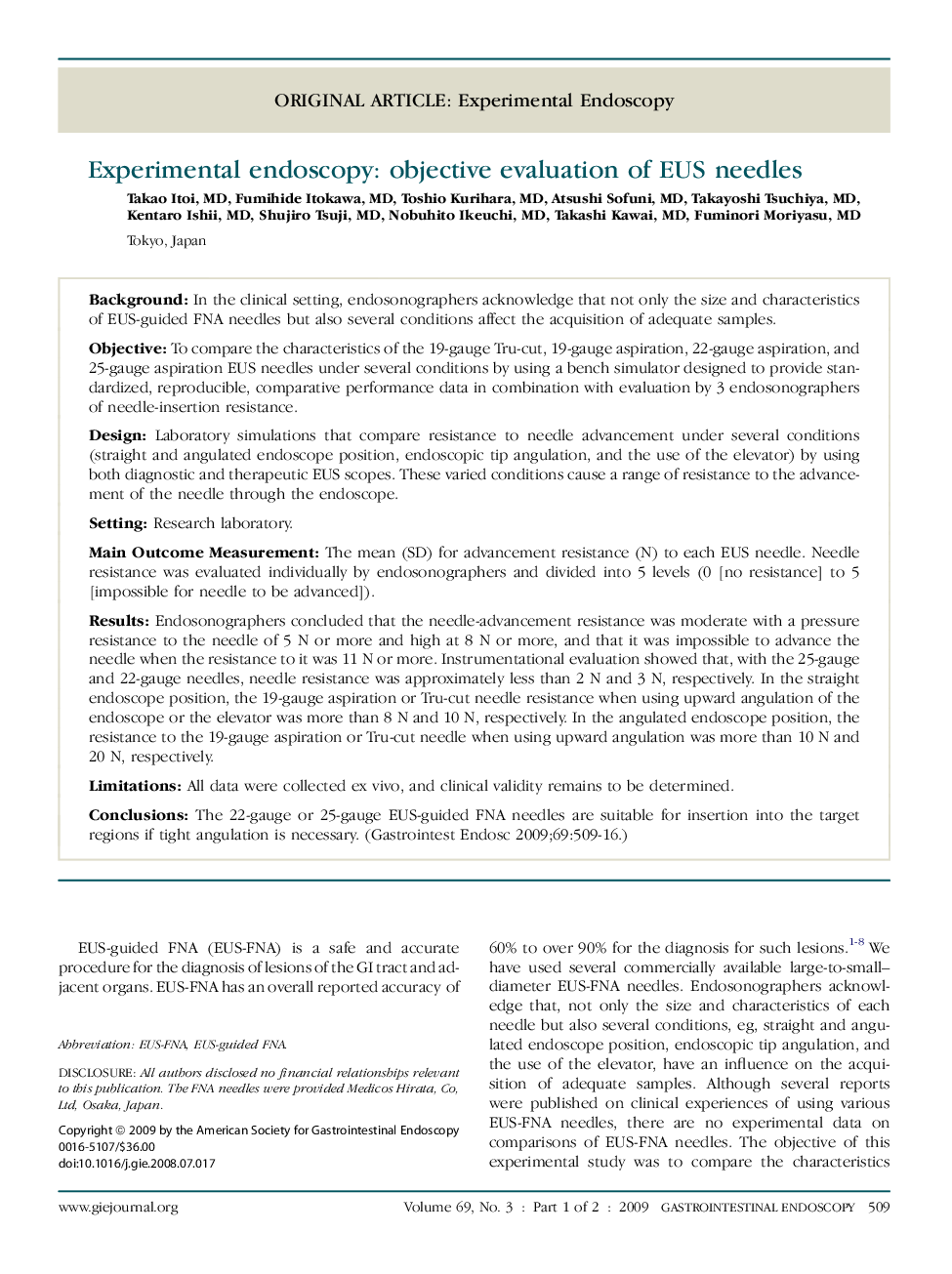| Article ID | Journal | Published Year | Pages | File Type |
|---|---|---|---|---|
| 3305773 | Gastrointestinal Endoscopy | 2009 | 8 Pages |
BackgroundIn the clinical setting, endosonographers acknowledge that not only the size and characteristics of EUS-guided FNA needles but also several conditions affect the acquisition of adequate samples.ObjectiveTo compare the characteristics of the 19-gauge Tru-cut, 19-gauge aspiration, 22-gauge aspiration, and 25-gauge aspiration EUS needles under several conditions by using a bench simulator designed to provide standardized, reproducible, comparative performance data in combination with evaluation by 3 endosonographers of needle-insertion resistance.DesignLaboratory simulations that compare resistance to needle advancement under several conditions (straight and angulated endoscope position, endoscopic tip angulation, and the use of the elevator) by using both diagnostic and therapeutic EUS scopes. These varied conditions cause a range of resistance to the advancement of the needle through the endoscope.SettingResearch laboratory.Main Outcome MeasurementThe mean (SD) for advancement resistance (N) to each EUS needle. Needle resistance was evaluated individually by endosonographers and divided into 5 levels (0 [no resistance] to 5 [impossible for needle to be advanced]).ResultsEndosonographers concluded that the needle-advancement resistance was moderate with a pressure resistance to the needle of 5 N or more and high at 8 N or more, and that it was impossible to advance the needle when the resistance to it was 11 N or more. Instrumentational evaluation showed that, with the 25-gauge and 22-gauge needles, needle resistance was approximately less than 2 N and 3 N, respectively. In the straight endoscope position, the 19-gauge aspiration or Tru-cut needle resistance when using upward angulation of the endoscope or the elevator was more than 8 N and 10 N, respectively. In the angulated endoscope position, the resistance to the 19-gauge aspiration or Tru-cut needle when using upward angulation was more than 10 N and 20 N, respectively.LimitationsAll data were collected ex vivo, and clinical validity remains to be determined.ConclusionsThe 22-gauge or 25-gauge EUS-guided FNA needles are suitable for insertion into the target regions if tight angulation is necessary.
